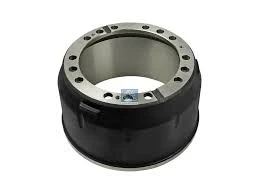
-
 Afrikaans
Afrikaans -
 Albanian
Albanian -
 Amharic
Amharic -
 Arabic
Arabic -
 Armenian
Armenian -
 Azerbaijani
Azerbaijani -
 Basque
Basque -
 Belarusian
Belarusian -
 Bengali
Bengali -
 Bosnian
Bosnian -
 Bulgarian
Bulgarian -
 Catalan
Catalan -
 Cebuano
Cebuano -
 Corsican
Corsican -
 Croatian
Croatian -
 Czech
Czech -
 Danish
Danish -
 Dutch
Dutch -
 Senyesemane
Senyesemane -
 Esperanto
Esperanto -
 Estonian
Estonian -
 Finnish
Finnish -
 French
French -
 Frisian
Frisian -
 Galician
Galician -
 Georgian
Georgian -
 German
German -
 Greek
Greek -
 Gujarati
Gujarati -
 Haitian Creole
Haitian Creole -
 hausa
hausa -
 hawaiian
hawaiian -
 Hebrew
Hebrew -
 Hindi
Hindi -
 Miao
Miao -
 Hungarian
Hungarian -
 Icelandic
Icelandic -
 igbo
igbo -
 Indonesian
Indonesian -
 irish
irish -
 Italian
Italian -
 Japanese
Japanese -
 Javanese
Javanese -
 Kannada
Kannada -
 kazakh
kazakh -
 Khmer
Khmer -
 Rwandese
Rwandese -
 Korean
Korean -
 Kurdish
Kurdish -
 Kyrgyz
Kyrgyz -
 Lao
Lao -
 Latin
Latin -
 Latvian
Latvian -
 Lithuanian
Lithuanian -
 Luxembourgish
Luxembourgish -
 Macedonian
Macedonian -
 Malgashi
Malgashi -
 Malay
Malay -
 Malayalam
Malayalam -
 Maltese
Maltese -
 Maori
Maori -
 Marathi
Marathi -
 Mongolian
Mongolian -
 Myanmar
Myanmar -
 Nepali
Nepali -
 Norwegian
Norwegian -
 Norwegian
Norwegian -
 Occitan
Occitan -
 Pashto
Pashto -
 Persian
Persian -
 Polish
Polish -
 Portuguese
Portuguese -
 Punjabi
Punjabi -
 Romanian
Romanian -
 Russian
Russian -
 Samoan
Samoan -
 Scottish Gaelic
Scottish Gaelic -
 Serbian
Serbian -
 Sesotho
Sesotho -
 Shona
Shona -
 Sindhi
Sindhi -
 Sinhala
Sinhala -
 Slovak
Slovak -
 Slovenian
Slovenian -
 Somali
Somali -
 Spanish
Spanish -
 Sundanese
Sundanese -
 Swahili
Swahili -
 Swedish
Swedish -
 Tagalog
Tagalog -
 Tajik
Tajik -
 Tamil
Tamil -
 Tatar
Tatar -
 Telugu
Telugu -
 Thai
Thai -
 Turkish
Turkish -
 Turkmen
Turkmen -
 Ukrainian
Ukrainian -
 Urdu
Urdu -
 Uighur
Uighur -
 Uzbek
Uzbek -
 Vietnamese
Vietnamese -
 Welsh
Welsh -
 Bantu
Bantu -
 Yiddish
Yiddish -
 Yoruba
Yoruba -
 Zulu
Zulu
difference between disc brake and drum brake master cylinder
The Difference Between Disc Brakes and Drum Brakes A Focus on Master Cylinders
When it comes to vehicle braking systems, two primary types are widely utilized disc brakes and drum brakes. Both systems serve the vital function of slowing down or stopping a vehicle, but they operate based on different principles and have distinct components. One crucial component that affects both systems is the master cylinder, which plays a pivotal role in hydraulic brake systems.
Understanding Disc Brakes
Disc brakes consist of a rotor, caliper, and brake pads. When the brake pedal is pressed, hydraulic fluid from the master cylinder travels through the brake lines to the caliper. The caliper houses the brake pads, which press against the rotor to create friction, leading to deceleration. A key advantage of disc brakes is their superior heat dissipation, which reduces the risk of brake fade—a condition where brakes become less effective due to overheating.
Understanding Drum Brakes
Drum brakes, on the other hand, feature a cylindrical drum that rotates with the wheel. Inside the drum, brake shoes are positioned. When the brake pedal is engaged, hydraulic pressure from the master cylinder forces the brake shoes outward against the drum’s interior. While drum brakes are often less expensive and can provide strong braking power, they tend to retain heat more than disc brakes, which may result in less efficient performance under extreme conditions.
difference between disc brake and drum brake master cylinder

The Role of the Master Cylinder
The master cylinder is a critical component in both systems. It converts the mechanical force applied to the brake pedal into hydraulic pressure. In disc brakes, the master cylinder typically has a two-circuit design, providing redundancy to enhance safety. When the driver presses the pedal, the master cylinder generates pressure that moves the brake fluid through the lines to the calipers.
In contrast, drum brakes also use a master cylinder, but the braking force is transmitted differently. The pressure forces the brake shoes outward, allowing them to contact the drum. While both systems rely on hydraulic pressure, the nature of the pressure application and the resulting braking forces differ.
Conclusion
In summary, disc brakes and drum brakes have distinct operational characteristics, including how they generate and apply braking force. While the master cylinder is a common component in both systems, its influence on performance and efficiency varies due to differences in design and mechanics. Understanding these differences can help automotive enthusiasts and everyday drivers appreciate the capabilities and limitations of their braking systems, ultimately contributing to safer driving experiences.
-
Why Choosing the Right Brake Drum Manufacturer Matters for Vehicle Safety and PerformanceLitabaJun.05,2025
-
Understanding Heavy Duty Brake Drums: Key to Truck Safety and PerformanceLitabaJun.05,2025
-
Reliable Braking Systems: Rear and Trailer Drum Brake Solutions for Heavy-Duty ApplicationsLitabaJun.05,2025
-
Power and Precision: Why Brake Drums Still Dominate in Vehicle Safety SystemsLitabaJun.05,2025
-
Brake Drums: Essential Components for Vehicle Safety and PerformanceLitabaJun.05,2025
-
Superior Brake Drums & Rotors for Reliable Stopping PowerLitabaJun.03,2025
-
Premium Brake Drums for Maximum Stopping PowerLitabaJun.03,2025
